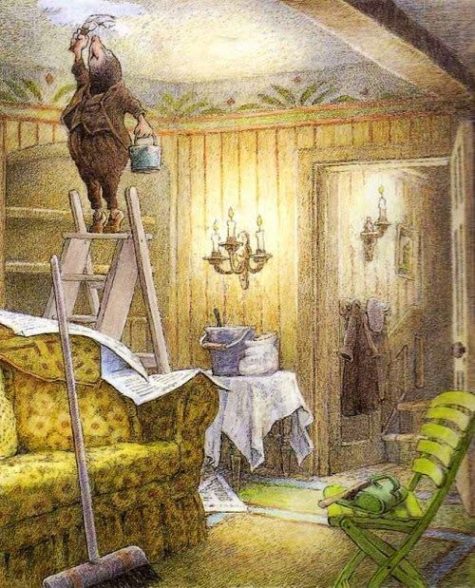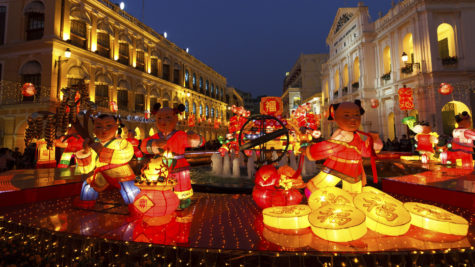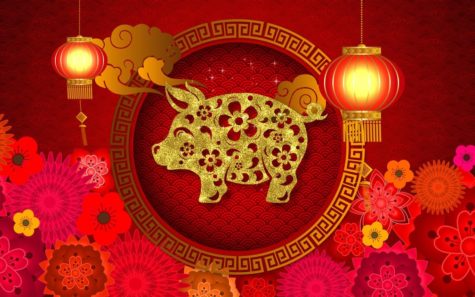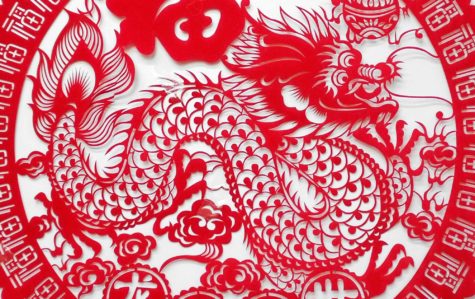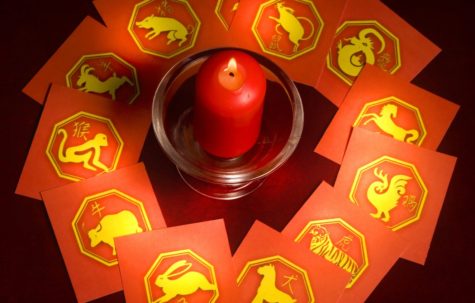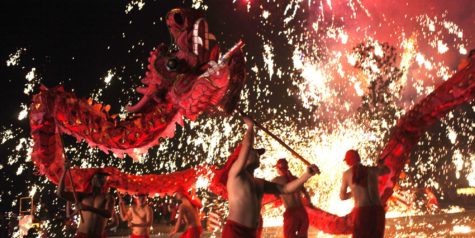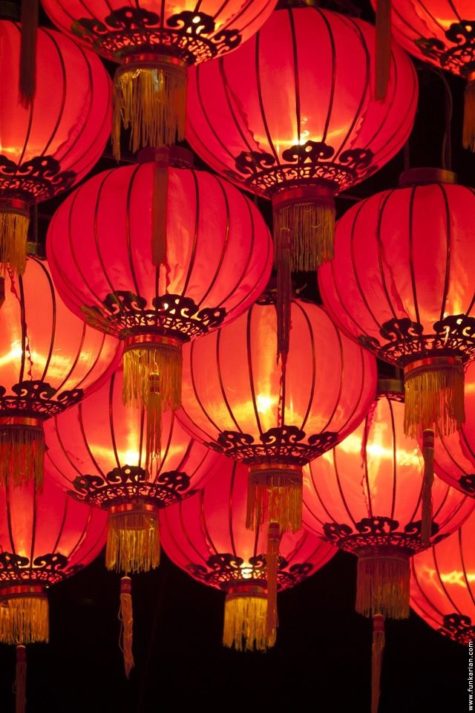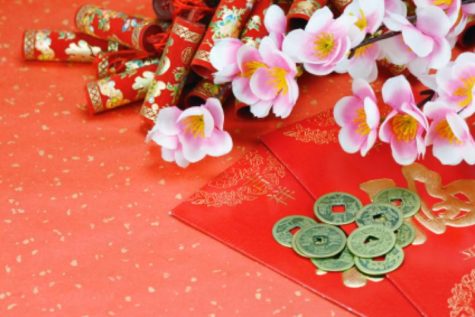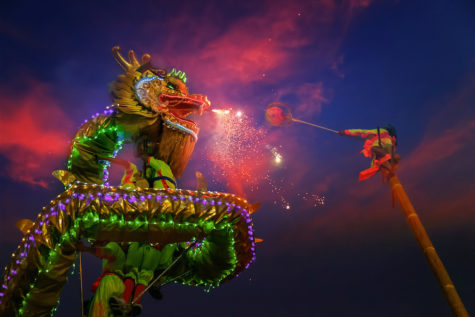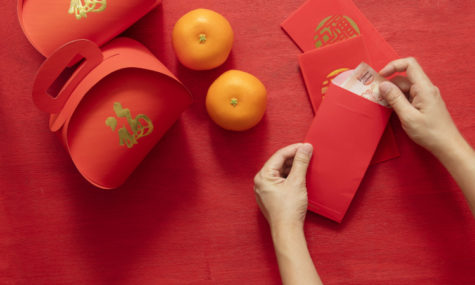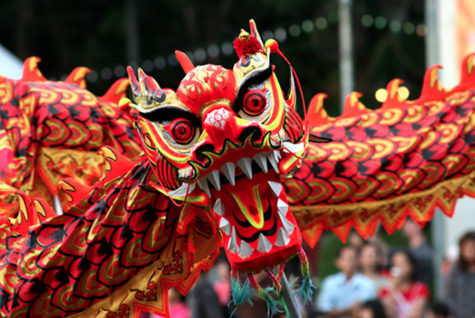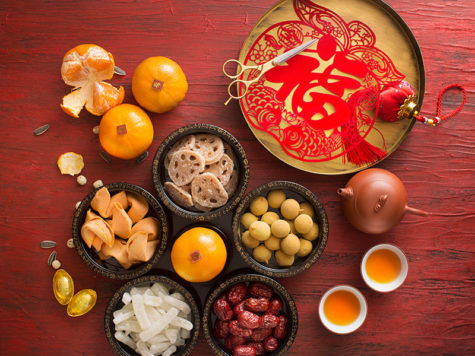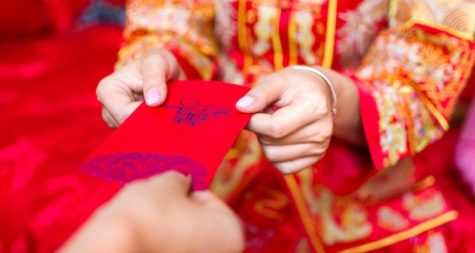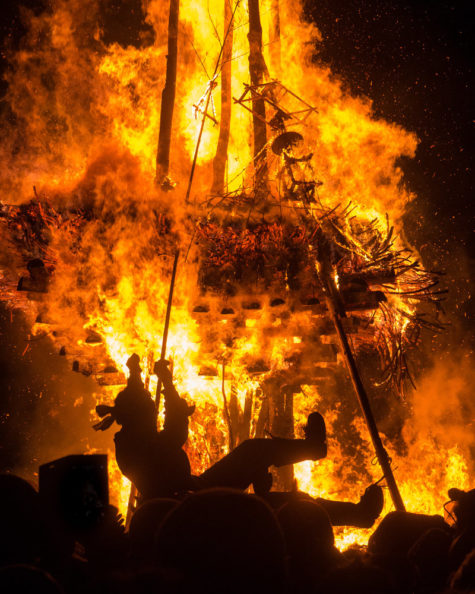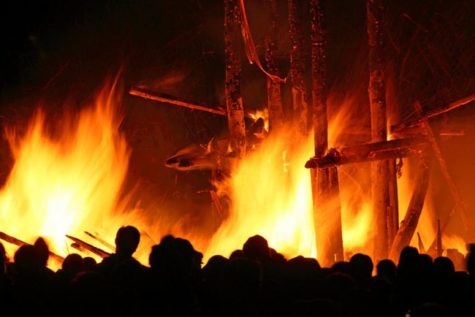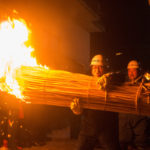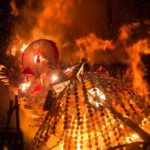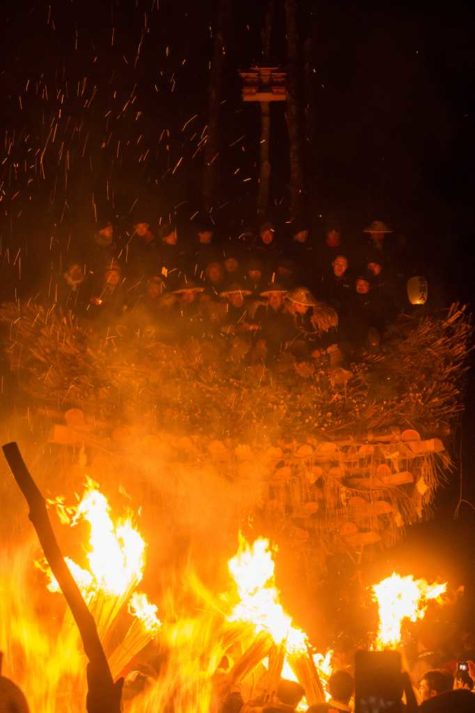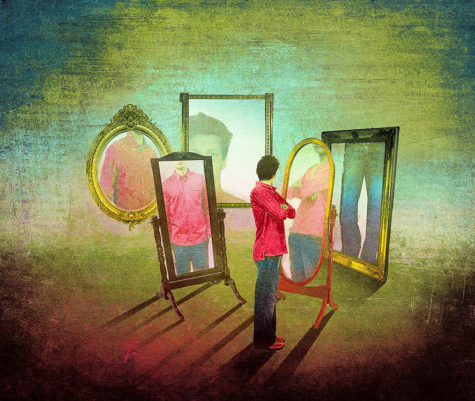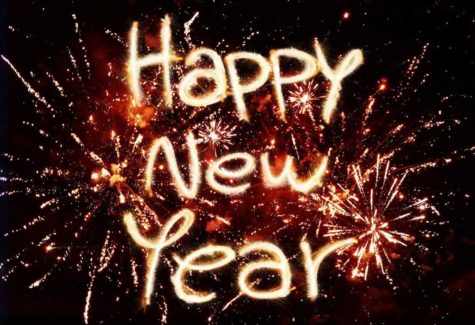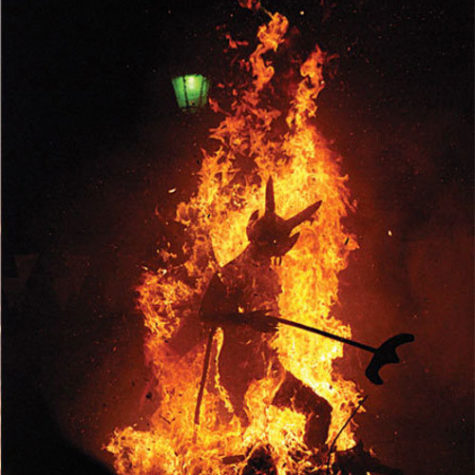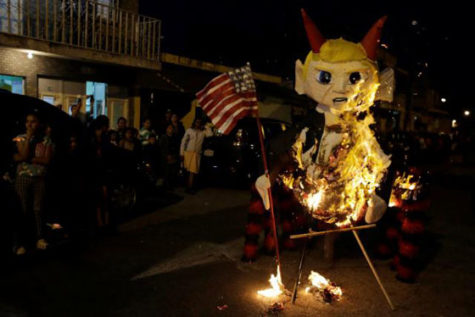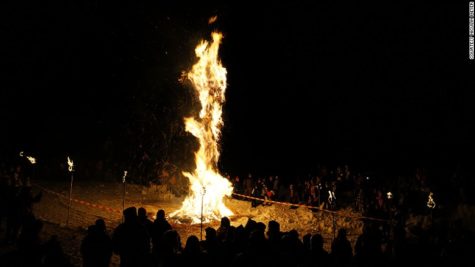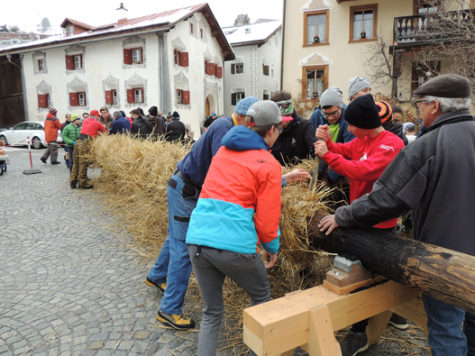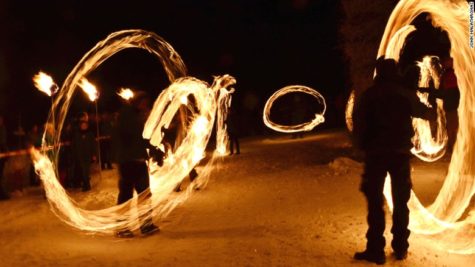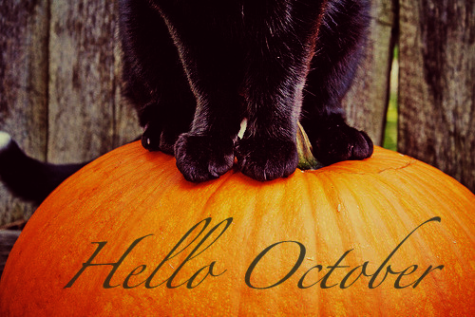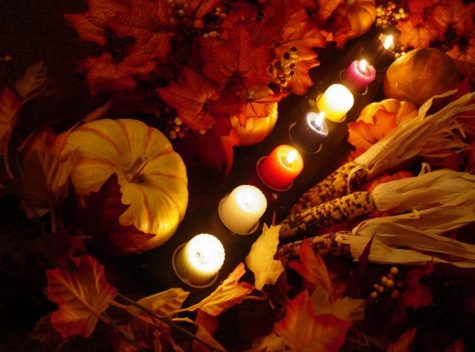Out With The Old
The main theme for January is “CLEAN IT UP”.
We have some very big energies coming in that you will not be able to take advantage of if you are bogged down in physical, emotional and energetic clutter, old intentions, unfinished business, anything you have put off or procrastinated and should have done “yesterday”, regrets, unexpressed communication, attachments to disappointments and unmanifested dreams, persisting bad habits, and we can go on and on as the list is very long.
You cannot bring in the new without making space by cleaning out the old. It is very simple. We spend lots of time making new lists and talking about what we want to accomplish in 2019 but there is no room for anything new unless we declutter the past. If you clean up the past, you will have many more options about what and how to bring in some new dreams and experiences. And we have tremendous opportunity to do so.
Here is an image. You have an old roof that has been fixed and layered with new material many, many times. Now it is time for a new roof again as this one does not serve you. It is cracked and leaking. You can patch or put on another layer of roofing making the roof very heavy and requiring you to use the same material. Or you can completely remove the existing roof and start over giving you many options of what materials to use. Although it will take more time and energy up front, it will be something better and much improved and certainly much lighter.
The container of your life is like your roof. You can either layer it with the same old beliefs, judgments, intentions and habits, or you clean up the clutter and start over. Cleaning up requires courage to let go, to complete and to tie up loose ends. It may require you to release some old hopes and dreams. We need to recapitulate our sentimentality and make sure it is not getting in the way of creating something new. There are many layers and aspects of cleaning up and each of us will have different percentages of each one to do.
The year starts off with a set of eclipses potentiating any focused work we do this month. There is a pressurized quality to the month that motivates us to clean under the rug and dig deep to see what we actually have, what we want to keep, and what we need to clean up. You can find yourself busy these days with the inspiration to get that new roof on but it is important to do this in a structured and organized way. Otherwise the chaos (yes, it follows us into 2019) will have you distracted and focused in unimportant areas.
Physical Clean Up
This one is easy as it is very clear where the clutter is. Look with fresh eyes at what you surround yourself with and have the courage to get rid of things even if they are “still useful” but you have not actually used them in a long time. Be generous in passing them along to someone who may actually use them.
Papers, files, old photos, stuff your kids made, things people have given you, clothing equipment, electronics etc. If they do not have an active place in your life today, release them. Another category is unfinished projects that may have seemed like a good idea at one time but ask yourself if you are really going to ever get back and finish them. The attachment to all of these physical things is usually of the ego as they represent something connected to our identity; a success, relationship, time in our life, experience or event, recognition, education etc.
The artisan role of the year is a master of destruction. Use this artisan talent wisely in dismantling your current container so you can recreate it to serve you better. Take one aspect or section at a time and drawer by drawer, you will gain momentum in your process of clean up. There will be many parts you will keep, but they will end up being organized differently. To support this, you can start by making some changes in your schedule to accommodate the clean-up process.
Emotional Clean Up
This is an area that is usually somewhat messy as it has to do mostly with relationships, karma, betrayal, unrequited love, what was said, what wasn’t said, and lots of unfinished business and loose end especially around endings. Emotional confusion falls into this category as well. This includes not trusting your intuition or sitting on the fence about something and either not going after what you feel is right or not cutting something loose that looks right but isn’t, because you are too cautious to take the leap.
Feelings can be confusing especially when it comes to karmic agreements around relationships. When do you known when something is finished? And how do you know when something is right? The truth is, if it does not feel right or good, it probably isn’t and it is time to change the relationship. Sometimes, relationships need to simply change and not be banned forever. This is a great opportunity to clean up old relationships, even if just from your end, as well as to complete necessary communication. If someone has passed on before you got to say what you wanted to say, you can always write a letter to them and then burn it as an offering to clean the emotional energy.
Forgiveness is a big part of the emotional clean up and goes a long way to neutralize what has been charged with negative emotions. Practice forgiveness when possible especially with yourself as most judgment ends up being focused back inward in some way. It is time to release the attachment we have to suffering and low self-esteem. It will not get us through the pearly gates. Bottom line is that anything that has an emotional charge to it can use some clean up.
Energetic Clean Up
What are you still carrying for others? Where are your energy leaks?
The energetic clean up includes your belief systems and what you take on from others and how you allow the attention points and judgments of others to affect you energetically. This is often a subtle area to recognize but one that can profoundly affect you. Sometimes we do not know why we feel the way we do and what we feel makes no sense. This is probably due to an energy field that is cluttered with what is not yours.
This is an excellent month to learn how to differentiate between what is yours and what is not, and to set good boundaries.
On the other hand, when you hold your boundaries too close out of fear of losing control of your energy field, you are also not available for the power you could receive from all the greater sources of energy that support us, such as the elements, your essence, the energy of love, beauty, inspiration, wisdom, powerful times like the eclipses and moon cycles. Your allies, guides and spirit helpers and the ones that can connect you to those greater sources of energy. Cleaning up your energy and eliminating fear will open up communication and make room for these sources of greater power and energy.
According to historical documents, on the day when Shun, who was one of ancient China’s mythological emperors, came to the throne more than 4000 years ago, he led his ministers to worship heaven and earth. From then on, that day was regarded as the first day of the first lunar month in the Chinese calendar. This is the basic origin of Chinese New Year.
The new year is by far the most important festival of the Chinese lunar calendar. A long time ago, the emperor determined the start of the New Year. Today, celebrations are based on Emperor Han Wu Di’s almanac. It uses the first day of the first month of the Lunar Year as the start of Chinese New Year. The Chinese New Year always occurs in January or February on the second new moon after the winter solstice, though on occasion it has been the third new moon.
In 2019, the Chinese New Year officially begins on February 5th and ends on February 19th. This begins the Year of the Pig.
The holiday is a time of renewal, with debts cleared, new clothes bought, shops and homes decorated, and families gathered for a reunion dinner. Enjoying extravagant foods with family and friends is arguably the cornerstone of the occasion, along with receiving the ubiquitous red envelopes full of cash (called lai see in Cantonese, or hongbao in Mandarin).
Chinese New Year is marked by fireworks, traditional lion dances, gift giving, and special foods. This is one of the most important holidays. It is observed all over the world. Similar celebrations occur in Japan, Korea, and Vietnam known as the Lunar New Year or the Spring Festival. The “Spring Festival” in modern Mainland China, is China’s most important traditional festival, this public holiday starts on the Chinese New Year, and lasts for 7 days.
About The Chinese Calendar
The Chinese Calendar is a based on the cycles of the moon. The start of the New Year begins anywhere from late January to mid-February. A complete lunar cycle takes 60 years. It is composed of five cycles that are 12 years each. Each 12-year segment is named after an animal.
According to legend, Buddha called all the animals to him before he departed from earth. Only twelve came and as a reward to them, he named the years after them in the order they arrive (the order is listed below). It is believed the animal ruling of the year you are born effects your personality and “it is the animal that hides in your heart”.
The Chinese calendar uses the stem-branch system. The branches are the 12 years. There are ten stems that are used in the counting system. The stems are metal, water, wood, fire and soil; each having a yin and a yang side. There are a lot more intricacies in the system, but you should also know that the elements correlate to colors. Metal=white or golden, water=black, wood=green, fire=red, and soil=brown.
When you put all of this together you end up with the following:
- 2007 is the Year of the Red Pig
- 2008 is the Year of the Brown Rat
- 2009 is the Year of the Brown Ox
- 2010 is the Year of the White or Golden Tiger
- 2011 is the Year of the White or Golden Rabbit
- 2012 is the Year of the Black Dragon
- 2013 is the Year of the Black Snake
- 2014 is the Year of the Green Horse
- 2015 is the Year of the Green Sheep
- 2016 is the Year of the Red Monkey
- 2017 is the Year of the Red Rooster
- 2018 is the Year of the Brown Dog
- 2019 is the Year of the Brown Pig
- 2020 is the Year of the White Rat
Which Chinese zodiac animal are you?
According to the Asian astrology, your year of birth – and the animal this represents – determines a lot about your personality traits. Find the year you were born, and you can figure out which animal in the Chinese Zodiac is yours. The animal changes at the beginning of the Chinese New Year, and traditionally these animals were used to date the years.
Remember, Chinese New Year is a movable celebration, dictated by the lunar cycle, which can fall anytime between January 21 and February 20. So, if you were born during that time, you may need to do some research to figure out which animal applies to you.
- Rat: 2008, 1996, 1984, 1972, 1960, 1948
- Ox: 2009, 1997, 1985, 1973, 1961, 1949
- Tiger: 2010, 1998, 1986, 1974, 1962, 1950
- Rabbit: 2011, 1999, 1987, 1975, 1963, 1951
- Dragon: 2012, 2000, 1988, 1976, 1964, 1952
- Snake: 2013, 2001, 1989, 1977, 1965, 1953
- Horse: 2014, 2002, 1990, 1978, 1966, 1954
- Goat: 2015, 2003, 1991, 1979, 1967, 1955
- Monkey: 2016, 2004, 1992, 1980, 1968, 1956
- Rooster: 2017, 2005, 1993, 1981, 1969, 1957
- Dog: 2018, 2006, 1994, 1982, 1970, 1958
- Pig: 2019, 2007, 1995, 1983, 1971, 1959
Traditions
Traditions observed during the New Year stem from legends and practices from ancient times. Legend tells of a village, thousands of years ago, that was ravaged by Nian, an evil monster, one winter’s night. The following year the monster returned and again ravaged the village. Before it could happen a third time, the villagers devised a plan to scare the monster away.
The color red protects against evil. Red banners were hung everywhere. Firecrackers were set off, and people banged on drums and gongs creating loud noises to scare the beast away. The plan worked. The celebration lasted several days during which people visited with each other, exchanged gifts, danced, and ate tasty food. Today, celebrations last two weeks.
The red posters with poetic verses on it were initially a type of amulet, but now it simply means good fortune and joy. Various Chinese New Year symbols express different meanings. For example, an image of a fish symbolizes “having more than one needs every year”. A firecracker symbolizes “good luck in the coming year”. The festival lanterns symbolize “pursuing the bright and the beautiful.”
Preparing for the New Year
Spring cleaning is started about a month prior to the new year and must be completed before the celebrations begin. All the negativity and bad luck from the previous year must be swept out of the house.
Many people clean their homes to welcome the Spring Festival. They put up the red posters with poetic verses on it to their doors, Chinese New Year pictures on their walls, and decorate their homes with red lanterns. It is also a time to reunite with relatives so many people visit their families at this time of the year.
People also get haircuts and purchase new clothing. It symbolizes a fresh start. Flowers and decorations are purchased. Decorations include a New year picture (Chinese colored woodblock print), Chinese knots, and paper-cuttings, and couplets.
Flowers have special meanings and the flower market stocks up on:
- Plum blossom for luck
- Kumquats for prosperity
- Narcissus for prosperity
- Sunflowers to have a good year
- Eggplant to heal sickness
- Chom mon planta for tranquility
Offerings are made to the Kitchen God about a week before the New Year.
On The Eve of The Spring Festival
The Annual Reunion Dinner, Nian Ye Fan, is held on the eve of the festival. This is an important part of the celebration. Families come together and eat together. The food is symbolic. Many dishes have ingredients that sound the same as good tidings. In northern China, dumplings are served at midnight, they symbolize wealth.
In the evening of the Spring Festival Eve, many people set off fireworks and firecrackers, hoping to cast away any bad luck and bring forth good luck. Children often receive “luck” money. Many people wear new clothes and send Chinese New Year greetings to each other. Various activities such as beating drums and striking gongs, as well as dragon and lion dances, are all part of the Spring Festival festivities.
The dragon dance is a highlight in the celebrations. A team of dances mimic the movements of the dragon river spirit. Dragons bring good luck.
Lions are considered good omens. The lion dance repels demons. Each lion has two dancers, one to maneuver the head, the other to guide the back. Business owners offer the lions a head of lettuce and oranges or tangerines. The offerings hope to insure a successful year in business. Lettuce translates into “growing wealth” and tangerines and oranges sound like “gold” and “wealth” in Chinese. The lions eat the oranges, then spew them up and out into the hordes of people who eagerly tried to catch the them. After eating the lettuce, they spit out it out in a thousand pieces.
During the New Year
Red packets called Lai See Hong Bao (or Hongbao) with money tucked inside are given out as a symbol of good luck. The amount is an even number as odd numbers are regarded as unlucky.
- Bright red lanterns are hung.
- Brooms and cleaning material are put away. No cleaning takes place during the holiday so no good luck is swept out of the home.
- During the New Year celebrations people do not fight and avoid being mean to each other, as this would bring a bad, unlucky year.
- Bright colors and red are worn.
- Everyone celebrates their birthday this day and they turn one year older.
- Traditional red oval shaped lanterns are hung.
The end of the New Year is celebrated with the Lantern Festival.
Top Ten Taboos for The Chinese New Year
The Spring Festival is a time of celebration. It’s to welcome the new year with a smile and let the fortune and happiness continue on. At the same time, the Spring Festival involves somber ceremonies to wish for a good harvest. Strict rules and restrictions go without saying.
To help you with that, here are the top 10 taboos during the Chinese New Year. Follow these and fortune will smile on you.
- 1. Do not say negative words
All words with negative connotations are forbidden! These include: death, sick, empty, pain, ghost, poor, break, kill and more. The reason behind this should be obvious. You wouldn’t want to jinx yourself or bring those misfortunes onto you and your loved ones.
- 2. Do not break ceramics or glass
Breaking things will break your connection to prosperity and fortune. If a plate or bowl is dropped, immediately wrap it with red paper while murmuring auspicious phrases. Some would say 岁岁平安 (suì suì píng ān). This asks for peace and security every year. 岁 (suì) is also a homophone of 碎, which means “broken” or “shattered.” After the New Year, throw the wrapped up shards into a lake or river.
- 3. Do not clean or sweep
Before the Spring Festival, there is a day of cleaning. That is to sweep away the bad luck. But during the actual celebration, it becomes a taboo. Cleaning or throwing out garbage may sweep away good luck instead.
If you must, make sure to start at the outer edge of a room and sweep inwards. Bag up any garbage and throw it away after the 5th day. Similarly, you shouldn’t take a shower on Chinese New Year’s Day.
- 4. Do not use scissors, knives or other sharp objects
There are 2 reasons behind this rule. Scissors and needles shouldn’t be used. In olden times, this was to give women a well-deserved break.
Sharp objects in general will cut your stream of wealth and success. This is why 99% of hair salons are closed during the holidays. Hair cutting is taboo and forbidden until Lunar February 2, when all festivities are over.
- 5. Do not visit the wife’s family
Traditionally, multiple generations live together. The bride moves into the groom’s home after marriage. And, of course, she will celebrate Chinese New Year with her in-laws.
Returning to her parents on New Year’s Day means that there are marriage problems and may also bring bad luck to the entire family. The couple should visit the wife’s family on the 2nd day. They’d bring their children, as well as a modest gift (because it’s the thought that counts).
- 6. Do not demand debt repayment
This custom is a show of understanding. It allows everyone a chance to celebrate without worry. If you knock on someone’s door, demanding repayment, you’ll bring bad luck to both parties. However, it’s fair game after the 5th day. Borrowing money is also taboo. You could end up having to borrow the entire year.
- 7. Avoid fighting and crying
Unless there is a special circumstance, try not to cry. But if a child cries, do not reprimand them. All issues should be solved peacefully. In the past, neighbors would come over to play peacemaker for any arguments that occurred. This is all to ensure a smooth path in the new year.
- 8. Avoid taking medicine
Try not to take medicine during the Spring Festival to avoid being sick the entire year. Of course, if you are chronically ill or contract a sudden serious disease, immediate health should still come first. Related taboos include the following ~ Don’t visit the doctor, Don’t perform/undergo surgery, Don’t get shots
- 9. Do not give New Year blessings to someone still in bed
You are supposed to give New Year blessings (拜年—bài nián). But let the recipient get up from bed first. Otherwise, they’ll be bed-ridden for the entire year. You also shouldn’t tell someone to wake up. You don’t want them to be rushed around and bossed around for the year. Take advantage of this and sleep in!
- 10. Chinese gift-giving taboos
It was mentioned above that you should bring gifts when paying visits. It’s the thought that counts, but some gifts are forbidden.
- Clocks are the worst gifts. The word for clock is a homophone (sounds like) “the funeral ritual”. Also, clocks and watches are items that show that time is running out.
- Items associated with funerals – handkerchiefs, towels, chrysanthemums, items colored white and black.
- Sharp objects that symbolize cutting a tie (i.e. scissors and knives).
- Items that symbolize that you want to walk away from a relationship (examples: shoes and sandals)
- Mirrors
- Homonyms for unpleasant topics (examples:green hats because “wear a green hat” sounds like “cuckold”, “handkerchief” sounds like “goodbye”, “pear” sounds like “separate”, and “umbrella” sounds like “disperse”).
Some regions have their own local taboos too. For example, in Mandarin, “apple” (苹果) is pronounced píng guǒ. But in Shanghainese, it is bing1 gu, which sounds like “passed away from sickness.”
These don’t just apply to the Spring Festival, so keep it in the back of your mind!
For the Spring Festival, these rules may seem excessive. Especially when you add in the cultural norms, customs and manners. But like a parent would say, they are all for your own good. Formed over thousands of years, these taboos embody the beliefs, wishes and worries of the Chinese people.
Foods For The New Year
Dishes may vary slightly according to regional and family customs. Dumplings (gau ji) are more commonly served in the north of China, while Hong Kong families often go for a dim sum meal.
Food symbolism goes back centuries in China, and is taken very seriously on special occasions such as Lunar New Year. All food items have their symbolic meanings which, for Hongkongers, are often derived from their Cantonese homonyms. For instance, the Cantonese word for lettuce – sang choi – sounds very similar to the phrase which means “growing wealth”. Of course, nothing considered “unlucky” is allowed near the dining table.
By carefully choosing the menu in this way, families will supposedly be able to increase their luck and manifest their wishes for the coming year, whether those be earning more money or having more children.
Red meat is not served and one is careful not to serve or eat from a chipped or cracked plate. Fish is eaten to ensure long life and good fortune. Red dates bring the hope for prosperity, melon seeds for proliferation, and lotus seeds means the family will prosper through time. Oranges and tangerines symbolize wealth and good fortune. Nian gao, the New Year’s Cake is always served. It is believed that the higher the cake rises the better the year will be. When company stops by a “prosperity tray” is served. The tray has eight sides (another symbol of prosperity) and is filled with goodies like red dates, melon seeds, cookies, and New Year Cakes.
Here the origins of some traditional Chinese festival foods and their often quirky symbolic meanings.
- Lettuce for the lion dance
No traditional Lunar New Year celebration is complete without the famous lion dance, which is thought to bring good luck and ward off evil spirits. Performers wearing the traditional lion costume normally dance through the streets to the sound of gongs and drums. When the lion briefly stops at houses and businesses along the way, it will “eat” lettuce that is hung up outside the doors, since the humble vegetable symbolizes “growing fortune”. Inside the head of the lettuce will often be a red envelope, further emphasizing its significance.
- Dried oysters and ‘hair vegetable’ stir-fry
This unusual but lucky dish is named ho see fat choy in Cantonese, which sounds a lot like the words meaning “flourishing business”. For an extra dose of luck, ho see (oyster) on its own sounds similar to the Cantonese for “good things” or “good business”, while fat choy (hair vegetable) sounds similar to “prosperity”, as in the traditional Lunar New Year greeting kung hei fat choi. What’s more, the expensive “hair vegetable”, which looks like strands of black hair, is actually a type of fungus. But that doesn’t put off Cantonese restaurants from serving the auspicious dish at Lunar New Year.
- Egg noodles, or yi mein
This classic dish of stir-fried egg noodles is often served at formal dinners during Lunar New Year and other festivals, as it symbolises longevity. The chef must not cut the noodle strands to preserve their length. For this reason, yi mein is often eaten at birthday celebrations too – kind of like the Chinese equivalent of a candle-lit birthday cake.
- Glutinous rice cake, or neen go
The Cantonese term for this traditional sticky treat sounds the same as the literal words “year high”, which symbolize the promise of a better year to come. Families may eat this for several reasons: wanting to have a higher income, higher social status or even more children. Rice cake can be cooked in a variety of ways, and can be sweet or savory. Historical records date the yearly custom to at least 1,000 years ago, in the days of the Liao dynasty (AD907-1125). If there’s one thing that is unmissable from every family’s Lunar New Year feast in all parts of China and Hong Kong, it must be this dish.
- ‘Basin food’, or poon choi
Originating from the walled villages of the New Territories, this traditional celebratory dish soon spread throughout Hong Kong and later China. Legend has it that the early settlers in the New Territories would pool together their most prized ingredients – meat and seafood – in a big wooden washbasin and cook them to be served to the whole village. The communal dish required huge efforts of co-ordination and manpower to cook, so it quickly became associated with celebrations and religious rituals. Each village had its own secret poon choi recipe consisting of various ingredients layered in a particular order in the pot, but the dish is now found in most Cantonese restaurants on special occasions.
- Lotus root soup, or leen gnau tong
The fleshy, tuber-like roots of the lotus flower have been a staple of Chinese cooking for millennia, and traditionally symbolise “abundance”, since the Cantonese term sounds like “having [money] year after year”. The ingredient is also prized for its supposed “cooling” effect on the body, according to traditional Chinese medicine. Lotus root soup, or alternatively stir-fried lotus root, is commonly eaten at Lunar New Year for these reasons.
- Dim sum
Another Cantonese food tradition that is now common in the West is dim sum. The phrase literally means “a light touch of the heart” or “a little bit of heart”. This reflects the care and attention put into each bite-sized dish that is shared between the table, such as har gau (shrimp dumplings), various types of filled buns, and cheung fun (rice noodle rolls). Like a Chinese take on brunch, dim sum is often served at lengthy afternoon yum cha sessions in tea houses. But Hongkongers often go for an even more lavish version of this meal around Lunar New Year.
Auspicious Greetings
The Chinese New Year is often accompanied by loud, enthusiastic greetings, often referred to as auspicious words or phrases. New Year couplets printed in gold letters on bright red paper is another way of expressing auspicious new year wishes. The most common auspicious greetings and sayings consist of four characters, such as the following:
- 金玉滿堂 Jīnyùmǎntáng –
“May your wealth [gold and jade] come to fill a hall” - 大展鴻圖 Dàzhǎnhóngtú –
“May you realize your ambitions” - 迎春接福 Yíngchúnjiēfú –
“Greet the New Year and encounter happiness” - 萬事如意 Wànshìrúyì –
“May all your wishes be fulfilled” - 吉慶有餘 Jíqìngyǒuyú –
“May your happiness be without limit” - 竹報平安 Zhúbàopíng’ān –
“May you hear [in a letter] that all is well” - 一本萬利 Yīběnwànlì –
“May a small investment bring ten-thousandfold profits” - 福壽雙全 Fúshòushuāngquán –
“May your happiness and longevity be complete” - 招財進寶 Zhāocáijìnbǎo –
“When wealth is acquired, precious objects follow”
These greetings or phrases may also be used just before children receive their red packets, when gifts are exchanged, when visiting temples, or even when tossing the shredded ingredients of yusheng particularly popular in Malaysia and Singapore. Children and their parents can also pray in the temple, in hopes of getting good blessings for the new year to come.
Sources:
According to the book, 365 Goddess, January 19, is the day given to the Water Blessing Festival in Bulgaria. However, I think she must have been referring to the Anastenaria, a firewalking ritual performed primarily in May with a smaller one on an unspecified date in January, which culminates in a water blessing after the fire walking.
If you wish to celebrate today as a day of Water Blessings, here’s what you can do:
- Themes: Joy; Health; Cleansing
- Symbols: Water; Flowers; Fern; Birchwood
- Presiding Goddess: Kupala
About Kupala.
The Slavic goddess of springs and water, Kupala, whose name literally means “to bathe,” washes us with happiness and longevity. Oddly enough, she has a fire aspect too, which likely alludes to purification, protection, and transformation. Wildflowers, birch trees, and ferns are sacred to her.
To do today:
To bring a year filled with joy, contentment, and health, leave a natural-fiber cloth outside today to gather dew. Use it tomorrow to bathe in Kupala’s magic.
Take some flower petals to any moving water source (even a hose) and toss them on the stream. As you do, make a wish for something that will make you really happy. Let Kupala, in the form of the water, carry your wish toward manifestation.
To rid yourself of sickness, negativity, or a bad habit before the year gets really rolling, find a safe fire source (such as a candle that’s self-contained in glass). Put this on the floor and jump over it. As you do, say:
Old burns away; only the good, the good shall stay.
Old to new, old to new, Kupala, my heart renew.
This symbolically leaves the old behind and invokes Kupala’s aid in your efforts for positive change.
Source: 365 Goddess
Alternatively known as ‘Tondo Matsuri’, ‘Sai No Kami’, ‘Sagicho’’ and Dondo Yaki’, Dōsojin Matsuri are special New Year Fire Festivals. They are held in shrines and public spaces to bless and then burn the previous year’s New Year’s decorations on a huge bonfire constructed of a wigwam of bamboo.
Shimekazari (sacred New Year decoration made from braided rice straw and good luck charms) and other New Year ornaments are taken down from homes and ceremoniously burned on the fire to secure good health and a fruitful harvest the following year. The calligraphic wishes or prayers of young children (called kakizome) are also placed onto the bonfire. As the children’s’ prayers are burnt, they are lifted up into the air towards the gods, bringing success to the children in the new year.
The loud crackling and popping sounds made by the burning bamboo is believed to tell listeners whether or not they will receive good fortune in the year to come.
Dōsojin is also the name for the Shinto guardian deities, which are closely associated with fertility in crops and people. At Dōsojin Matsuri, prayers are made to Dōsojin statues for successful births and bountiful harvests. One of the largest celebrations of Dōsojin Matsuri takes place at Nozowa Onsen in Nagana Prefecture.
Fire and snow always go well and the Nozawa Onsen Fire Festival, Nozawa Onsen Dosojin Matsuri exemplifies this as one of the three great fire festivals in Japan.
Taking place on January 15th every year, the festival is staged to celebrate the birth of a family’s first child, to dispel evil spirits and also to pray for happy marriage.
Each year crowds gather for the famous Dōsojin Matsuri, a kind of cleansing ritual for men aged 25 and 42 years, the so-called ‘unlucky ages’ in Japan. The 42-year-olds’ task is to defend a purpose-built two-story shrine, which they sit upon as it is besieged by fire at the hands of the 25-year-olds and onlookers.
It takes roughly one hundred villagers to build the shrine for the Nozawa Fire Festival. The trees are cut down in October and brought down from the mountain and through the village on January 13th prior to being made into a huge wooden structure or shaden. After the shaden has been constructed, the priest from Kosuge shrine performs a ceremony endowing it with a dosojin.
The highlight on January 15th is a “fire-setting battle” which ends up with the setting fire of the shaden with blazing torches by the offensive team and the offering of torches to the deity, making the festival truly spectacular and exciting.
The main spectacle involves a small group of 25 year old villagers guarding the base of the three story structure, and another group of very inebriated 25 year old men sitting atop the structure drinking and cheering on their teammates. Directly across from the structure, a massive bonfire is lit, which is flanked on both sides by excited visitors.
The villagers light their bamboo bundles on fire and walk in groups as large as 10 to the structure to do battle with the guards. The men at the base form human shields and use tree branches to extinguish the flames. The entire battle can last for over 2 hours and became very intense and violent at times with men shoving, jumping, slapping, and hitting each other with lit bundles of bamboo.
The entire festival is quite lengthy and can take up to four hours from the beginning to the end. Some observers gather just for the main attraction which is the battle between the guards and the torch bearing villagers. Add liberal servings of saké to all of the above and you’re sure to go home buzzing after seeing quite a spectacle – and maybe a bit scorched from the flames (don’t wear your new down jacket).
This famous Japanese festival is nationally designated as an important intangible folk cultural property. It originally began as an invocation for a good harvest, health and good fortune in the coming year, but has been expanded to include a good ski season as well.
Sources:
The best days listed here are based on both the phase of the moon and its position in the zodiac. Many people believe that if you do the tasks on the dates listed, you will get the best results possible.
January
- Cut Hair to Increase Growth: 5, 6, 9 – 11, 14, 15, 18, 19
- Cut Hair to Slow Growth: 2, 3, 21, 24 – 26, 29, 30
- Quit Smoking: 2, 3, 21 – 23, 29, 30
- Start Diet to Gain Weight: 9 – 11, 18, 19
- Start Diet to Lose Weight: 2, 3, 21 – 23, 29, 30
February
- Cut Hair to Increase Growth: 5 – 7, 10 – 12, 15, 16
- Cut Hair to Slow Growth: 3, 21, 22, 25 – 27
- Quit Smoking: 3, 19, 20, 25 – 27
- Start Diet to Gain Weight: 5 – 7, 15, 16
- Start Diet to Lose Weight: 3, 19, 20, 25 – 27
March
- Cut Hair to Increase Growth: 6, 10, 11, 14, 15
- Cut Hair to Slow Growth: 2 – 4, 20, 21, 25, 26, 29 – 31
- Quit Smoking: 2 – 4, 25, 26, 29 – 31
- Start Diet to Gain Weight: 6, 14, 15
- Start Diet to Lose Weight: 2 – 4, 25, 26, 29 – 31
April
- Cut Hair to Increase Growth: 6, 7, 10 – 12
- Cut Hair to Slow Growth: 3, 4, 21, 22, 26, 27
- Quit Smoking: 3, 4, 21, 22, 26, 27
- Start Diet to Gain Weight: 10 – 12
- Start Diet to Lose Weight:3, 4, 21, 22, 26, 27
May
- Cut Hair to Increase Growth: 4, 8, 9, 16, 17
- Cut Hair to Slow Growth: 1, 2, 18 – 20, 23 – 25, 28 – 30
- Quit Smoking: 1, 2, 18 – 20, 23 – 25, 28 – 30
- Start Diet to Gain Weight: 8, 9
- Start Diet to Lose Weight: 1, 2, 18 – 20, 23 – 25, 28 – 30
June
- Cut Hair to Increase Growth: 4, 5, 13, 14
- Cut Hair to Slow Growth: 2, 19 – 21, 24 – 26, 29, 30
- Quit Smoking: 2, 19 – 21, 24 – 26, 29, 30
- Start Diet to Gain Weight: 4, 5
- Start Diet to Lose Weight: 19 – 21, 24 – 26
July
- Cut Hair to Increase Growth: 2, 10, 11, 14, 15
- Cut Hair to Slow Growth: 17, 18, 22, 23, 27, 28
- Quit Smoking: 17, 18, 22, 23, 27, 28
- Start Diet to Gain Weight: 2
- Start Diet to Lose Weight: 17, 18, 22, 23
August
- Cut Hair to Increase Growth: 6, 7, 11, 12
- Cut Hair to Slow Growth: 18 – 20, 23, 24, 27, 28
- Quit Smoking: 18 – 20, 23, 24, 27 – 29
- Start Diet to Gain Weight: No good days
- Start Diet to Lose Weight: 18 – 20, 27 – 29
September
- Cut Hair to Increase Growth: 2, 3, 7, 8, 12, 13, 30
- Cut Hair to Slow Growth: 14 – 16, 19 – 21, 24, 25
- Quit Smoking: 14 – 16, 19 – 21, 24 – 27
- Start Diet to Gain Weight: 12, 13
- Start Diet to Lose Weight: 14 – 16, 24 – 27
October
- Cut Hair to Increase Growth: 1, 4, 5, 9 – 11, 27, 28, 31
- Cut Hair to Slow Growth: 13, 16 – 18, 21, 22, 25, 26
- Quit Smoking: 13, 16 – 18, 21 – 24
- Start Diet to Gain Weight: 9 – 11
- Start Diet to Lose Weight: 13, 21 – 24
November
- Cut Hair to Increase Growth: 1, 2, 5 – 7, 10, 11, 28, 29
- Cut Hair to Slow Growth: 13, 14, 17, 18, 21 – 23
- Quit Smoking: 13, 14, 17 – 20
- Start Diet to Gain Weight: 5 – 7
- Start Diet to Lose Weight: 17 – 20
December
- Cut Hair to Increase Growth: 3, 4, 8, 9, 26, 27, 30, 31
- Cut Hair to Slow Growth: 14 – 16, 19, 20, 23, 24
- Quit Smoking: 14 – 18, 23, 24
- Start Diet to Gain Weight: 3, 4, 30, 31
- Start Diet to Lose Weight: 14 – 18, 23, 24
Source: The Farmer’s Almanac
January 1st marks the beginning of a New Year, a year of new beginnings, new hopes, and new adventures. But why January 1st? To fully understand this, we must travel back in time, back to antiquity. The Ancient Romans began the new year in the middle of March. This was logical because at this time of year life begins to emerge from the dead of winter. Leaves begin turning green, flower buds sprout from the ground, and signs of new life are everywhere. Hibernating animals awake from their slumber and baby animals take their first steps.
Then along came Julius Caesar with his own ideas. During a trip to Egypt, Caesar had seen a marvelous, intriguing calendar. He brought it back to Rome where he and his scholars began to interpret and tamper with it to create the Julian Calendar. Unfortunately, while making these changes they completely lost the accurateness of the Egyptian calendar. During this time, they decided that January 1st would begin the new year.
After years of editing and corruption of the Julian Calendar, Pope Gregory XIII established the Gregorian Calendar in 1582. This calendar solidified the dates and was thought to better encompass the four seasons. Most countries use this calendar today.
There were and are other calendars used around the world. The Aztec, the Hindu, the lunar, and the Jewish calendars are a few examples. Asian countries follow the lunar calendar and celebrate the New Year in January or February while Diwali begins the New Year in India in October or November. The Jewish New Year commences in late September to early October.
For all people the New Year is a time of celebration. It is a time to reflect on our past, to forgive others, and to make amends. It is a time to look forward to our futures and to cherish our family and friends.
An optimist stays up until midnight to see the new year in.
A pessimist stays up to make sure the old year leaves.
-Bill Vaughan
To everyone, everywhere, we wish you a Happy New Year.
Found at: Web Holidays
Burning the Devil or La Quema del Diablo is a tradition held every December 7, at 6:00 in the evening sharp, families build bonfires outside their homes and burn effigy of Satan. It is a tradition that many Guatemalans take part as a way to cleanse their home from devils that lurk in their home, creeping behind the furniture or hiding under the bed.
La quema del diablo can be traced to colonial time, a tradition that started since the 18th century. Held on the eve of the Feast of the Immaculate Conception and as a prelude to holiday season, those who could afford it adorns the fronts of their houses with lanterns, but for those who have lesser means builds a bonfires from their trash to celebrate the occasion.
A symbolical tradition with a belief that the fire burns the devil serves as purifying element, as the Virgin Mary was the blessed one to conceive baby Jesus must be free from any form of evil, therefore the event serves as “burning the devil” to clear the way for Mary’s feast.
Though the celebration may sound fun, it is controversial especially for the environmentalist groups. Back in the days, mostly paper were burned for the “cleansing ritual”, but now, piles of rubbish are mostly made of plastic and rubber that causes air pollution.
Over time the tradition evolved, from burning piles of garbage and pieces of furniture to being replaced by the effigy of Satan in a form of piñatas.
The tradition has special significance in Guatemala City because of its anticipation of Feast of the Immaculate Conception, the patron saint of the city. Along the street of Zona 1, the historic city center, many vendors pile the street selling stuffs associated with La Quema del Diablo, from firecrackers to simple and intricate devil piñatas. In different parts of the city, people celebrate and burn their own devil piñatas.
The tradition continues, as the idea is to burn all the bad from the previous year and to start anew from the ashes. It is widely observed throughout the country, The Devil is burned at the stroke of six. In Antigua, the former capital of the country, a devil three stories tall is constructed and burned in the city square.
A variation of this tradition is held in San Antonio Palopo. In this very unique celebration, they carry a statue of Maximón around town with a noose around his neck, they locals then hang Maximón by his neck in front of Catholic church, douse him with gasoline, and set him on fire. This is the local way of showing respect to the Christian god.
Setting people on fire has been a way of ridding the town of evil doers for many centuries. As soon as the Spaniards settled in Guatemala they brought with them the Christian religion. The Christian religion frowned on bloodshed. So instead they burned evil doers alive to kill them. This way they did not shed blood and therefor committed no sin.
Most of the inhabitants still pray to both the Christian and Mayan gods and deities such as Maximón or ancestors. They often ask for healing, wealth, help with love and sexual fertility.
The locals say they pray to both just in case one god does not grant their wishes the other might. This happens with both evangelical and Catholic believers. ( Not all, but the majority) This is kept secret for fear of discrimination from others.
While the many of the locals pray to both god and deities they publicly denounce Maximón shortly before Christmas by dragging him around the village then hang him with a noose and set him on fire.
The political version of this festival:
Guatemalans burn traditional devil puppets to start their Christmas celebrations. The ceremonial burning of devils started in the 16th century and is meant to chase away bad spirits. And in 2016, US president-elect Donald Trump was a big hit. But not in a good way.
Revelers in Guatemala set ablaze cardboard piñata of Trump wearing devil horns. In fact, piñata makers said Trump is far and away the best-seller. Trump’s hardline stance on immigration during his election campaign, including a promise to build a wall along the US-Mexico border, has drawn anger from Latin Americans in the US and around the world.
So this is a way to vent out the anger? It can be. Guatemalans believe the practice of torching the devil helps banish bad spirits from their homes and neighborhoods.
Sources:
According to some calendars, August 1st is the Egyptian New Year. So if you’d like to rethink those New Year’s Resolutions from back in January, or if you’d like to do some spells or rituals for the New Year but don’t want to wait another four months, today is a golden opportunity.
“Wipe the slate clean
dream a new dream.”
With a little bit of imagination, the above quote can be used to create a spell for new beginnings. Here’s an example. You will need a small chalkboard or dry erase board, or a piece of paper, a pencil, and an appropriate eraser.
Light a white candle and think about the resolutions you made for the New Year, in particular, the ones that you were unable to keep. Write them on the chalkboard. As you write each one, say out loud:
“I don’t have to do this
if I don’t want to!”
Now, take your eraser, and begin erasing the resolutions. As you erase, chant the following incantation over and over until the chalkboard (or whatever you used) is totally clean.
“I wipe the slate clean,
I dream a new dream.”
You now have a clean slate, and an opportunity to create a whole new dream. Enjoy!
Note: This post was put together by Shirleytwofeathers you may repost and share if you give me credit and a link back to this website. Blessed be.
The “L’Hom Strom” festival takes place on the first Saturday in February every year the small community of Scuol in canton Graubünden, (in Switzerland close to the borders of both Austria and Italy). The “hom strom” is the famous “Straw Man of Scuol,” a large dummy.that is set alight.
On the first Saturday in February, young men crack whips to assemble the population, and the youths of Scuol, then go from farm to farm collecting straw which has been hand-threshed and especially prepared for this purpose. The straw is taken down to the village square where the thick strands of rye are then twined around a telephone pole which is almost eight meters (24 ft) long. The work must be done by noon, at which time the bundle should have reached a diameter of approximately two meters.
In the afternoon, a group of adults take the “l’hom strom” to Gurlaina and place the Hom Strom in a specially prepared hole in a field, and there set up ready for burning. The enormous effigy is carefully guarded to protect him so that pranksters – specifically the boys from the next village – cannot light him before his time!
At dusk, the people of Scuol parade through the village streets singing songs on the way to Gurlaina. As night falls, the dummy is burned, accompanied by songs to drive away the winter.When the tower clock strikes eight, the oldest boys throw balls of fire, which are rags drenched in petroleum and which have up to now illuminated the grounds, at the Hom Strom and set him aflame.
At the end of the burning ceremony attending locals sing the fourth stanza of the song Hom Strom written in the 50’s by Men Rauch, born and raised in Scuol, where a Christian adaptation is easily recognizable:
Las flommas van in ot,
portond al Segner lod,
chi’ns dosta dal malom,
eviva nos Hom Strom!!
Translation:
The flames that burn up into the sky,
give praise to the Lord,
who, in turn, protects us from evil,
long live our straw man!!…
The children and adults sing the Hom Strom song, written by a native poet. Half an hour later, the spirit of winter is consumed and everyone walks back to the village. This death by fire symbolizes the rapidly approaching end of winter.
~Info from various sources
In the ancient Roman calendar, October was the name of the eighth month of the year. Its name comes from octo, the Latin word for “eight.” When the Romans converted to a 12-month calendar, they tried to rename this month after various Roman emperors, but the name October stuck.
In Old England, the month was called Winmonath, which means “wine month,” for this was the time of year when wine was made. The English also called it Winterfylleth, or “Winter Full Moon.” They considered this full Moon to be the start of winter.
October Weather
A warm October is said to be a sign of a cold February. If leaves wither on the trees and fail to fall to the ground in autumn, it indicates a frosty winter with a great deal of snow, alternatively:
“If October brings heavy frosts and winds,
then will January and February be mild.”
The October Moons
The full moon closest to the Autumn Equinox is called the Harvest Moon, and as such, it sometimes falls in October. This moon is also called the Blood Moon, Hunters Moon, Shedding Moon or the Falling Leaf Moon. Coming right before Samhain, it’s a time when the nights are crisp and clear, and you can sense a change in the energy around you.
The Blood Moon takes its name not from blood sacrifices, but from the old custom of killing and salting down livestock before the Winter months made it impossible to feed them. Only the choicest stock was kept through the cold season.
Today we still subconsciously begin to make preparations for the coming Winter during this time. We check the antifreeze and tires for the car, gather up garden hoses, and make plans to winterize any drafty spots around doors and windows in the house. Some of us do and an ambitious fall cleaning.
October Magick
Throughout this month, festivals for the dead increase with the waning light, and late harvest festivals continue. The latter often include propitiation to ensure that the Goddess’s abundance will keep people whole through harsh or barren times.
Magical efforts accentuated by October’s characteristics include clearing away old, unnecessary things or habits so that our mind, body, and spirit are prepared for winter. Any spells for memory, especially commemorating loved ones, are apt. Beyond this, metaphysical efforts for health, luck, and debt paying seem common, ensuring that winter, the season of rest and death, will come and go with the least negative effect.
October Festivities
The Greek festival of Thesmophoria came every year in honor of Demeter and was confined to women only. This was a three-day rememberance of Kores return to the Underworld. At this festival the initiates shared a sacred barley drink and cakes. One feature of the Thesmophoria was a deterrent to offenders against the sacred laws against women. Priestesses read a list of the offenders before the doors of the goddesses’ temples, especially the temples of Demeter and Artemis. It was believed that anyone so cursed would die before the year ended.
The first day of the Thesmophoria was the kathodos, a ritual where purified priestesses took sacrificed piglets deep into the chasm where the sacred inner shrine of Demeter was. They left the piglets there and retrieved the remains of the one from the previous year. The second day was Nesteia, during which the remains of the retrieved piglets were displayed on the altar. Courts were closed in honor of Demeter as law-giver. On the third day, the retieved piglets were sown into the plowed Earth as a symbol of Demeter’s fertility aspect.
The Greeks also honored the god Hephaestus with an annual festival called Chalkeia.
In Tibet, the Buddhist Lent occured along with the Descent from Heaven festival which celebrated the end of the rainy season.
The Durga Puja in India honors the goddess Durga for four days beginning on the New Moon. It is a time of family reuntions, settling quarrels, and honoring the parents. In northern India this fesival is known as Dasahara. Durga is considered a matriarchal figure and is very popular with the people. She is shown with many arms and in bright colors.
The Lakshmi Puja, or Diwalii, is a fest of lights in honor of the goddess Lakshmi. It occurs right after the Durga Puja. During this Festival of Lights, lamos are everywhere, good things to eat are produced, and Hindu wives dance for their husbands. Lakshmi, wife of Vishnu, is considered the goddess of wealth and prosperity.
In the Pacific Ocean, the ancient Hawaiians celebrated a four-month long festival called Makahiki, beginning of the first Full Moon of this month. The god Lono had a special celebration of five days during this time, filled with games, pageantry, the hula, surfing, feasting, and tax collecting.
From:
